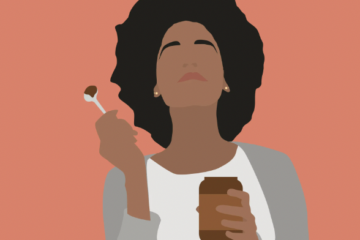Assisted Stretching: The Benefits of Working with a Professional
Assisted stretching, also known as partner stretching, is a form of stretching where a professional stretches your muscles for you. This type of stretching can help you achieve a greater range of motion, relieve muscle tension, and improve overall flexibility. In this blog post, we’ll explore the benefits of working with a professional for assisted stretching.
What is Assisted Stretching?
Assisted stretching involves having a professional stretch your muscles for you. This is different from traditional stretching where you stretch your own muscles. During an assisted stretching session, the professional will help you move your body into different positions and hold the stretches for you.
Assisted stretching can be done with a partner, but it’s recommended that you work with a trained professional. This ensures that the stretches are done safely and effectively.
Benefits of Assisted Stretching
There are several benefits to working with a professional for assisted stretching:
1. Improved Range of Motion
Assisted stretching can help you achieve a greater range of motion than you would be able to achieve on your own (1). This is because the professional is able to help you move your body into positions that you might not be able to do on your own.
2. Increased Flexibility
Assisted stretching can help improve your overall flexibility (2). When your muscles are stretched, they become more pliable and are able to move through a greater range of motion. This can help improve your performance in physical activities and reduce your risk of injury (3).
3. Reduced Muscle Tension
Assisted stretching can also help reduce muscle tension (4). When your muscles are tight, they can cause discomfort and limit your range of motion. By stretching your muscles, you can release tension and feel more relaxed.
4. Improved Posture
Assisted stretching can help improve your posture (5). When your muscles are tight, it can cause you to slouch and have poor posture. By stretching your muscles, you can improve your posture and reduce your risk of developing back pain.
Working with a Professional
It’s important to work with a trained professional when doing assisted stretching. A professional will be able to assess your individual needs and create a stretching program that’s tailored to your specific goals.
During your session, the professional will guide you through a series of stretches and help you move your body into different positions. They will also make adjustments as needed to ensure that you’re stretching safely and effectively.
In addition to helping you stretch, a professional can also provide guidance on how to stretch on your own. They can recommend stretches that you can do at home to supplement your assisted stretching sessions.
Conclusion
Assisted stretching can help improve your range of motion, flexibility, muscle tension, and posture. By working with a trained professional, you can ensure that you’re stretching safely and effectively. So, if you’re looking to improve your overall physical performance, reduce your risk of injury, or simply feel more relaxed, consider giving assisted stretching a try with a professional.
To book a 1-1 consultation with one of our dietitian specialists, click HERE
References
- Signorile, J. (2009) ‘The effects of an active-assisted stretching program on functional performance in elderly persons: A pilot study’, Clinical Interventions in Aging, p. 115. doi:10.2147/cia.s4152.
- O’Sullivan, K., Murray, E. and Sainsbury, D. (2009) ‘The effect of warm-up, static stretching and dynamic stretching on hamstring flexibility in previously injured subjects’, BMC Musculoskeletal Disorders, 10(1). doi:10.1186/1471-2474-10-37.
- Lee, J.H. et al. (2020) ‘Effects of static and dynamic stretching with strengthening exercises in patients with patellofemoral pain who have inflexible hamstrings: A randomized controlled trial’, Sports Health: A Multidisciplinary Approach, 13(1), pp. 49–56. doi:10.1177/1941738120932911.
- Wongwilairat, K. et al. (2018) ‘Muscle stretching with deep and slow breathing patterns: A pilot study for Therapeutic Development’, Journal of Complementary and Integrative Medicine, 16(2). doi:10.1515/jcim-2017-0167.
- Ruivo, R.M., Pezarat-Correia, P. and Carita, A.I. (2017) ‘Effects of a resistance and stretching training program on forward head and protracted shoulder posture in adolescents’, Journal of Manipulative and Physiological Therapeutics, 40(1), pp. 1–10. doi:10.1016/j.jmpt.2016.10.005.







